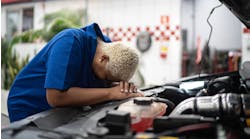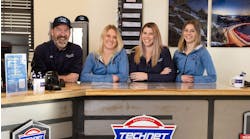“The first is, is this person right for the job? The second is, is this job right for the person?” Kleiman says.
As the president of the Sugar Land, Texas-based consulting firm Humetrics, Kleiman advises countless businesses on how to solve these two questions. The first question should be answered in the initial interview stages, after the employee has already done initial interviews with managers and ownership. The latter question, however, can be covered in group interviews, which Kleiman says should be the last stage of your interview process, and will have multiple members of your staff present.
Kleiman details how to get through these group interviews, to truly vet out your candidates and find a staff member who will be the perfect fit.
Questions about skill, and questions about basic attitudes should be answered before we get to the group interview. With group interviews, the prescreening has already been done, and a manager has already said, “I like this person.” Those factors are important first. Once we know that, normally we need to make sure the person fits, and if we can all work together.
You should have four to five people sit in on the group interview if your business is a small organization, like most shops. If you have more than that, the candidate will likely be intimidated. These should be people who will work closely with this candidate if he or she is hired.
Make sure you’re clear about what you want from the candidate, and from there you can come up with the right questions. One of the biggest mistakes in hiring is hiring without a shopping list. Make sure everybody involved has been trained for the interview, and everyone knows what’s involved and for what you’re looking.
Each person needs to know what his or her role is. It’s good to assign different roles beforehand and have individual conversations with each participant so the best questions can be asked, and be measured in a group interview. You need to predetermine the questions that will be asked by each person before the interview, and who will be the main spokesperson.
If you have someone sit in on the interview, have he or she focus on listening to the candidate. You’ll greatly increase your effectiveness of the selection process. That’s the first thing I would look at—maybe just try having someone else sit in on the group interview who isn’t asking questions.
Seating arrangement is also very important. You don’t want six people lined up with the candidate sitting in front of you, because it will come across as an interrogation. Make sure you plan that out and space your interviewers accordingly. People who are comfortable tell you almost anything. People who are uncomfortable tell you almost nothing.
Another option would be a walkaround group interview, if you don’t want to sit behind a desk. If you want your candidate to get a better feel for the work environment, where the candidate walks around the shop and is introduced to everyone, this could be a good option, and can make that candidate feel a lot more comfortable.
From this, you can get a sense of how they react to the other workers and situations in the shop. Maybe on purpose, there could be a rag or tool or something lying on the ground. You may want to see if they bend over and pick it up. Then, when you’re done, you can ask them what the No. 1 thing he or she saw while walking around the shop was. Walking into the shop, what was your reaction?
After the interview is over, you should have everybody rank the applicant on the key points that you want. Each person should do their own evaluation in private to avoid groupthink. Once the evaluations are done, you can meet and see how everybody agreed or disagreed, and have the conversation from there to see if this candidate will be a fit.



